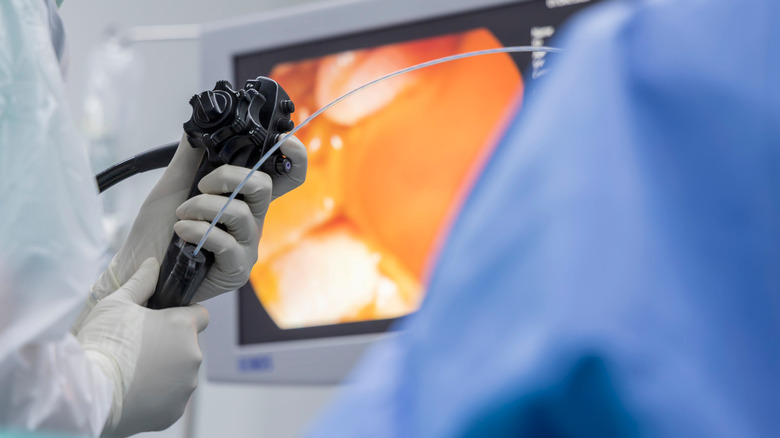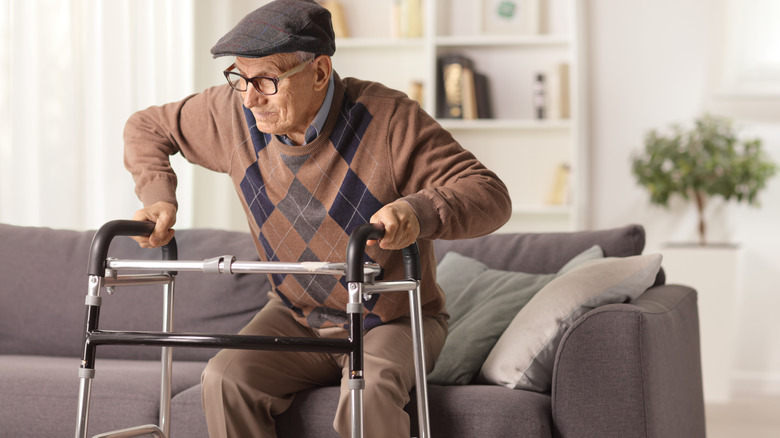What To Expect After A Cholecystectomy
In some cases, people with gallstones may require the removal of their gallbladder — otherwise known as a cholecystectomy — to treat any potential complications, according to the Mayo Clinic. "Laparoscopic cholecystectomy is a minimally invasive procedure that allows for faster recovery, less pain and smaller scars (compared to traditional open surgery)," says Dr. Jose Lopez, a general surgeon with Austin Surgeons, in an exclusive interview with Health Digest. Dr. Lopez goes on to share the specifics regarding what patients can expect following a cholecystectomy procedure.
"Most patients go home the same day of surgery, but some may require an overnight hospital stay," Dr. Lopez states. "Post-operative pain is usually managed with pain medications and non-narcotic pain relievers such as Tylenol." He adds that one's surgical incisions should be left to heal during the recovery process. "Steri-Strips (small pieces of tape) or glue is used to cover the incisions. These should be left alone until they fall off or your doctor recommends removing them," says Dr. Lopez. "Icing the incisions during the first 24-48 hours after surgery may help with pain."
How patients can best take care of themselves at home
Dr. Lopez explains to Health Digest how patients can go about treating pain or discomfort experienced after the procedure. "It is not unusual to experience muscular pain in the region of the puncture wounds under the ribs after surgery," he states. "This pain can sometimes radiate to the back and can be confused with gallbladder pain during the early post-operative period. This usually resolves after 5-7 days and can be treated with a heating pad," Dr. Lopez suggests. "Patients occasionally experience shoulder pain due to the carbon dioxide used to inflate the abdomen during surgery. This typically resolves within a few days," he adds.
Dr. Lopez also states that patients should slowly but surely attempt to resume basic daily functions after surgery. "It's important to get up and move around the house after you get home from the hospital but avoid strenuous activity for the first 2 weeks," he advises. "Begin with a bland diet (soup, crackers) and gradually work up to a normal diet," he says. However, Dr. Lopez cautions that certain food items are best avoided during this time. "I recommend that patients avoid greasy or fatty foods for two weeks and avoid eating large meals," he states.
When patients can resume normal activities
While basic functions, such as movement and eating, are encouraged in the aftermath of the procedure, Dr. Lopez says this does not include more strenuous activities, such as exercise. "For the first 2 weeks after surgery, avoid any strenuous physical activity," he says. However, Dr. Lopez notes that walking short distances may be the one exception to the rule. "After 2 weeks, jogging, riding a stationary bike, flat surface bike, or low resistance elliptical trainer is acceptable," he explains. "Do not lift anything greater than 25 lbs. for at least three weeks. Following this three-week period, patients may gradually increase activities with common sense," he says.
Offering general guidelines for patients, Dr. Lopez concludes the interview, stating, "Avoid any physical activity that might make the incision sore, including lifting heavy objects, moving furniture, mowing the lawn, etc. These activities should be avoided for four weeks following surgery." However, some activities, such as driving, can be resumed after a matter of days, Dr. Lopez says. "Do not drive for at least 5-7 days after surgery or within 24 hours of taking any prescription pain medication," he advises.



